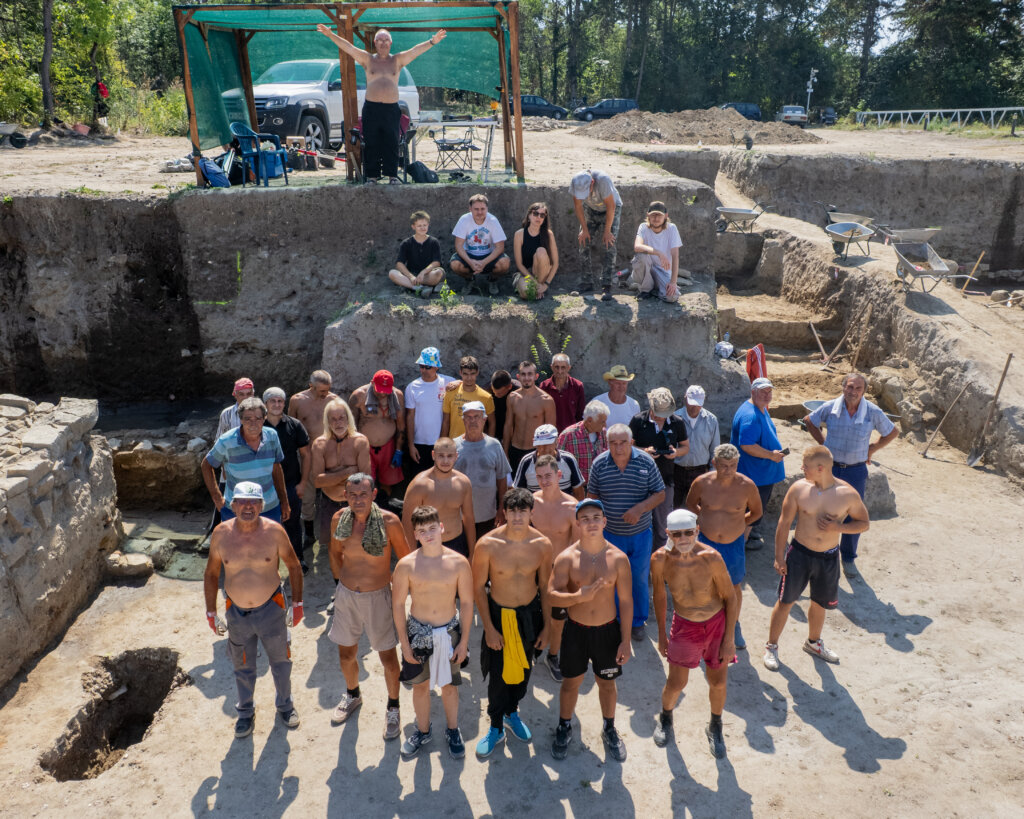Summer ’25 with the Centre, III
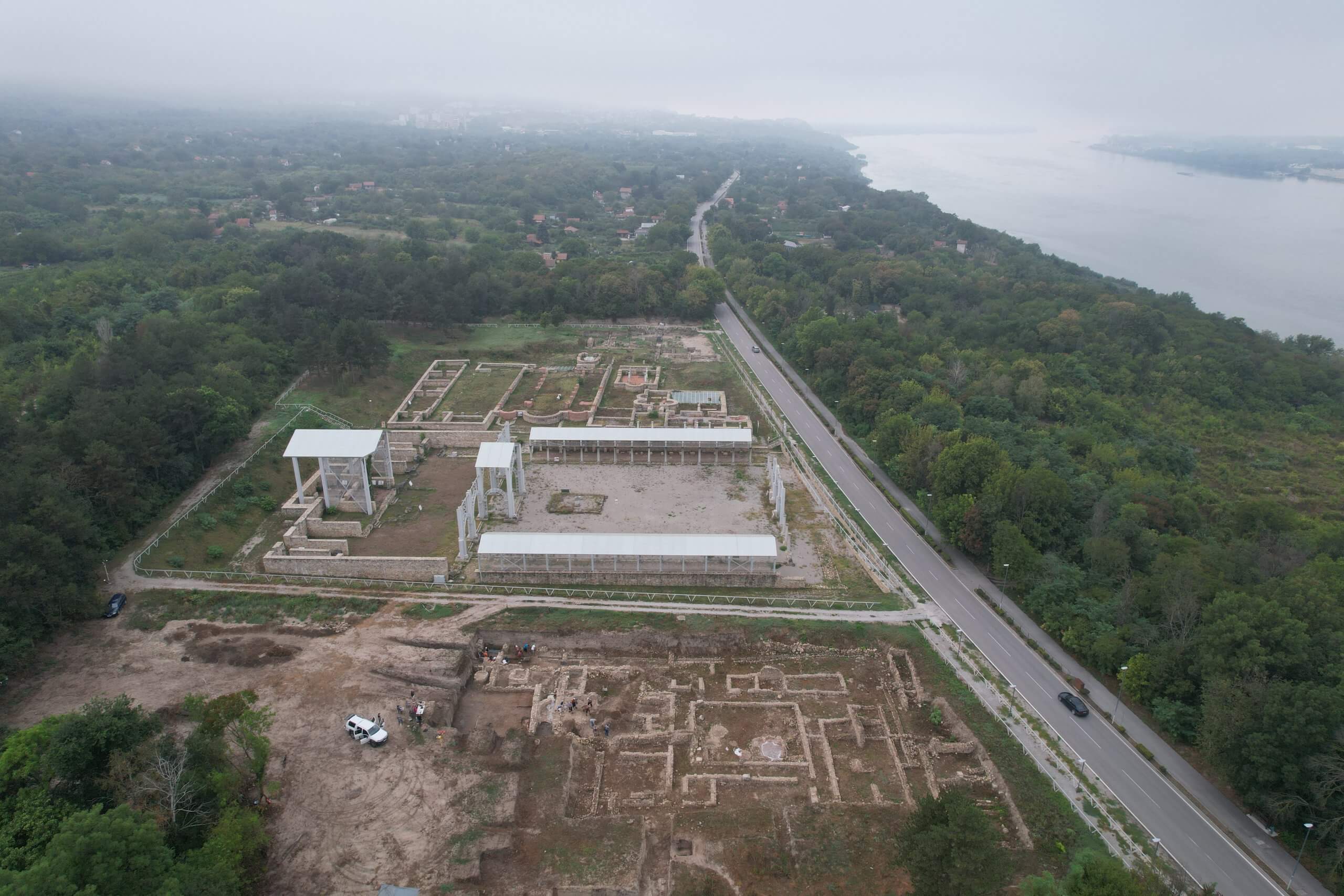
Almost imperceptibly, the Novae 2025 excavation campaign has come to an end. The team is slowly returning home, with only P. Dyczek, J. Recław, and I. Zych, who is working on the lamps, still remaining at the base. The documentation is being finalized, and a significant number of finds are on their way to conservation in Tarnovo.
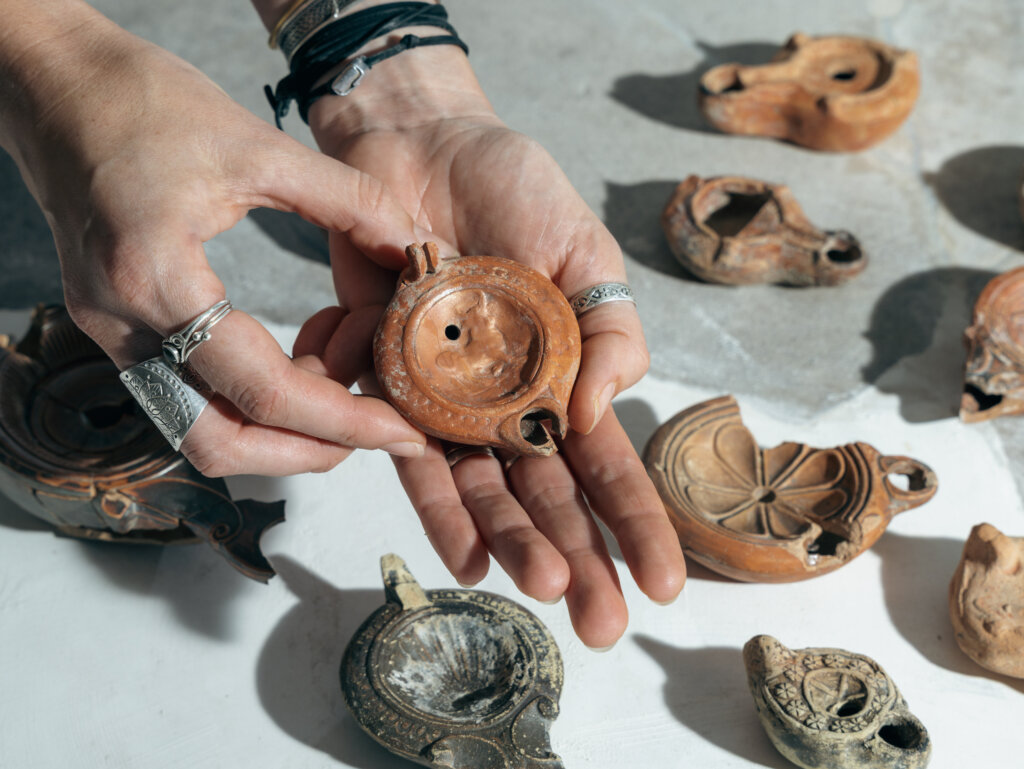
This year, all the archaeological “curses” came true – the most interesting architectural elements were uncovered only in the final 50 cm of layers, after digging through more than three meters of late erosion deposits, pits, negatives, and other archaeological structures. Moreover, part of the sought-after constructions turned out to be hidden beneath ramps and baulks.
From a didactic point of view, however, this was a highly valuable experience for our trainees. In one place, almost every type of archaeological structure appeared, which meant they had to perform nearly every type of archaeological work: measurements, leveling, pit exploration, wall cleaning, and much more.
In the lowest layers, the remains of wooden military barracks were uncovered. Efforts were made to trace their southern edge and confirm that they were separated by a street from other wooden constructions further to the south. This hypothesis was confirmed, but at the same time, a rather unusual solution was discovered in this part of the residence of the First Centurion of the First Cohort of the Eighth Augustan Legion – along the southern side of his house ran a portico. This solution has no known analogies in similar constructions.
A rare discovery was also made in the barracks. In the storage area of the commander’s house of the First Cohort, nearly 250 grams of carbonized grain were found. This was a stroke of luck, as grains are generally very poorly preserved in archaeological layers. In this case, the spilled grain was “charred” into charcoal beneath a burning beam. Naturally, the samples will be thoroughly analyzed, including radiocarbon dating. We expect to obtain a great deal of interesting data.
The main work, however, focused on the study of the Great House of the Centurion of the First Cohort of the First Italian Legion. For the first time, a fragment of a street was identified, with a stone margin and a pavement made of roof tiles, delimiting the complex on its southern side. This allowed us to establish that it was an exceptionally large and to some extent monumental building, covering almost 4,000 m². It is currently one of the largest structures discovered in Novae, after the principia and the valetudinarium.
Research was concentrated on the southern wing of this residence, which was almost entirely occupied by a double row bathhouse. Further walls were uncovered, along with a cold-water basin, drainage systems, and fragments of a destroyed praefurnium. Fragments of plaster show that the walls were decorated with paintings of green-and-red garlands on a white background, orange dadoes, possibly landscape elements with blue pigment, and, in a later phase, red-painted panels. The compositions were complemented with stucco elements: cornices, pilasters, and reveals.
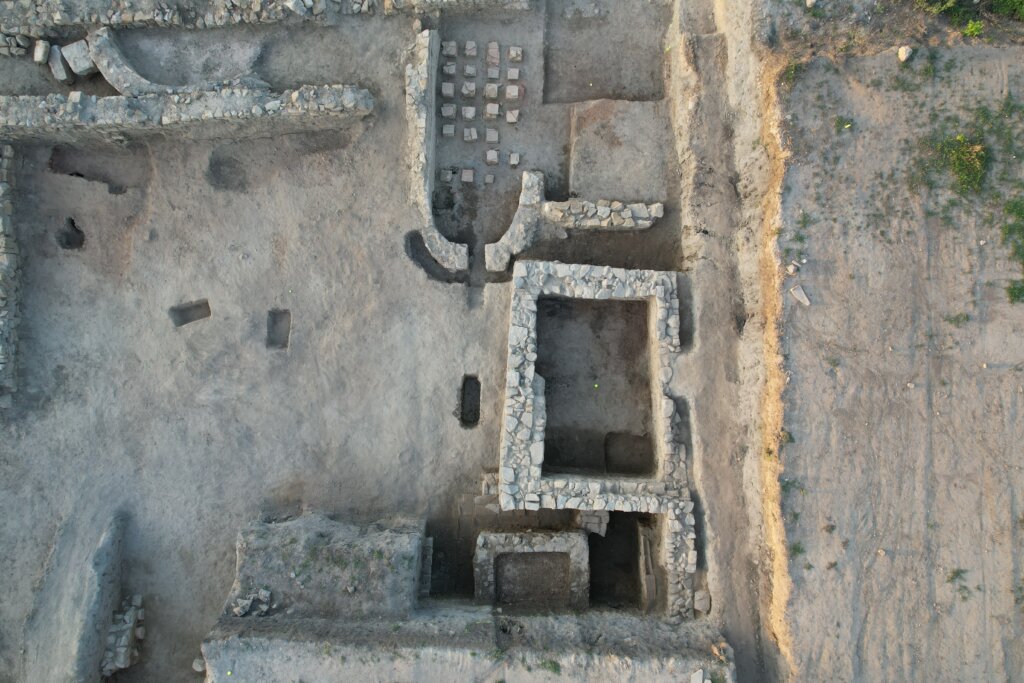
The problem of the so-called Great Channel, which runs along the entire building, was also solved. Two junctions connecting it with other channels were identified – one with the street channel and another running between the buildings on the opposite side of the street. Into this system also flowed channels from the southern, bathhouse part of the complex, constructed from imbrices. This made it possible to understand the complex network of channels and reconstruct its function. Part of the construction served as bypasses, allowing excess water to be diverted, whether caused by heavy rainfall or by the replacement of water in the bath pools.
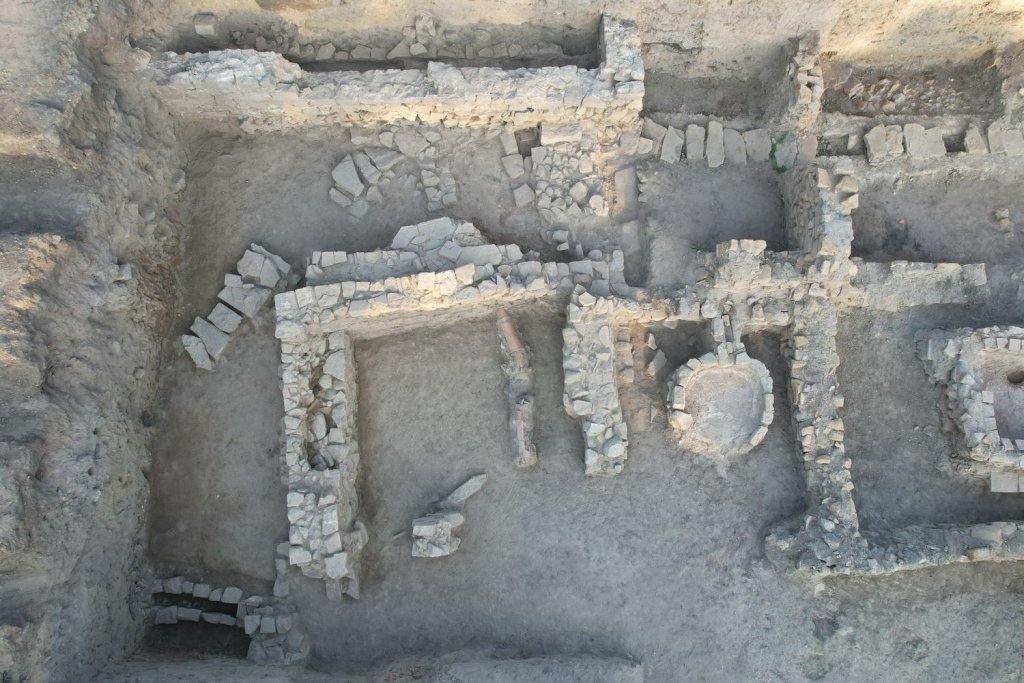
The issue of the development of the area lying south of the residence remains unresolved. Both the dimensions and the already known elements of this construction – including the course of the channels – suggest that double stone barracks of the First Cohort of the First Italian Legion may have stood there.
Further fragments of two later buildings were also uncovered, which – like the earlier ones – had their boundary along the line of the aforementioned street. In this way, the limits of four important constructions have been outlined: the row of wooden barracks and three stone buildings – one legionary and two civilian – covering a chronological span from the 1st to the 7th century AD.
In parallel with the excavations, work related to the implementation of European Union projects was carried out: seminars, drilling, sampling, LIDAR surveys, field measurements, and more. For this purpose, work also returned to the area of the military hospital. This area, abandoned for many years, had turned into a true jungle. The ruins of the hospital and the so-called portico building now resembled the ruins of a lost Mayan city. Forcing our way through the thicket, we conducted additional measurements and identified architectural elements that will allow us to faithfully reconstruct the original Roman architectural concept. This is of particular importance, since the hospital at Novae is the best-preserved building of its kind within the Empire. The reconstruction of its structure, proportions, and architectural solutions will therefore be exceptionally accurate – unlike in the case of hospitals preserved only fragmentarily, where reconstructions are based on freer interpretations.
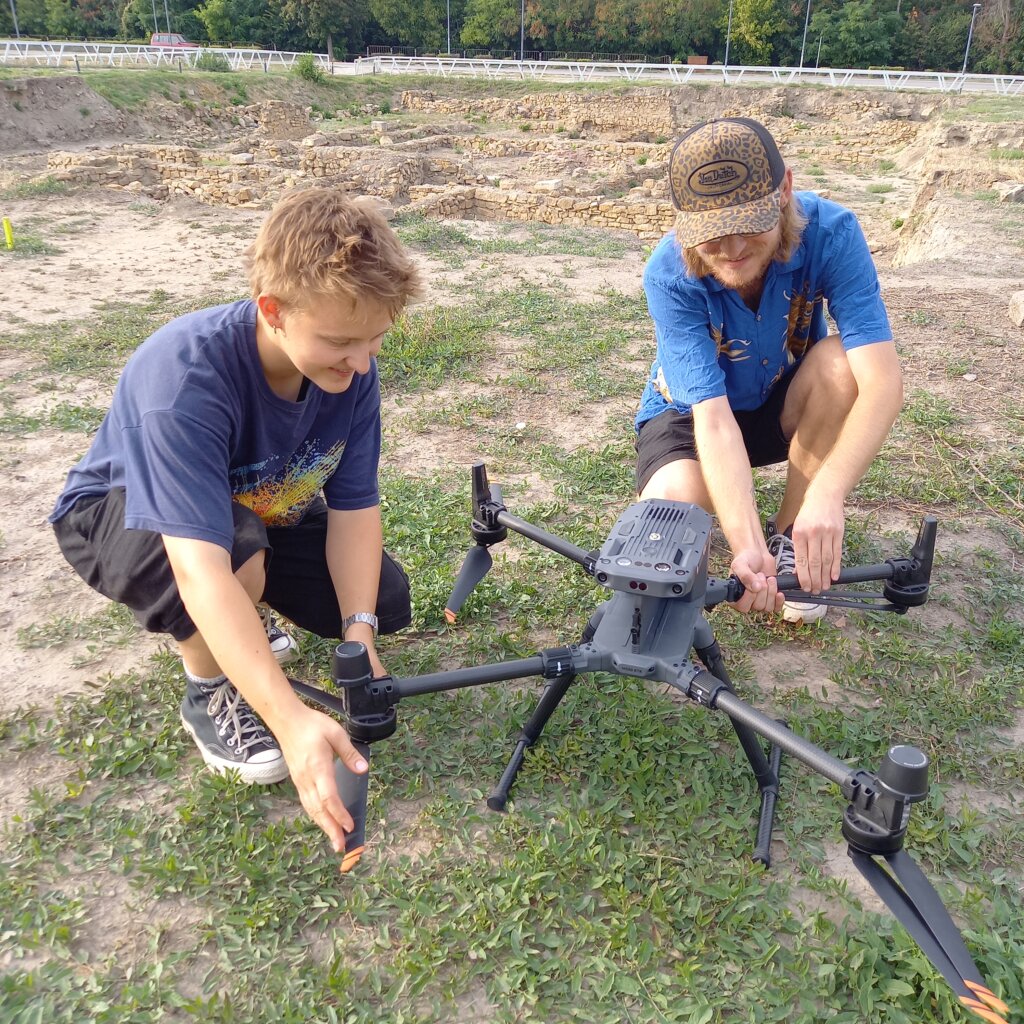
At the same time, work continued on the study of locally produced ceramics. The project is carried out by Prof. Dr. Hab. Inga Głuszek of Nicolaus Copernicus University in Toruń and Giuseppe Campitelli of the Università degli Studi “Gabriele d’Annunzio” in Chieti-Pescara. This time, in addition to the painstaking work on ceramic fragments, we also went on a field trip to visit well-known production sites.
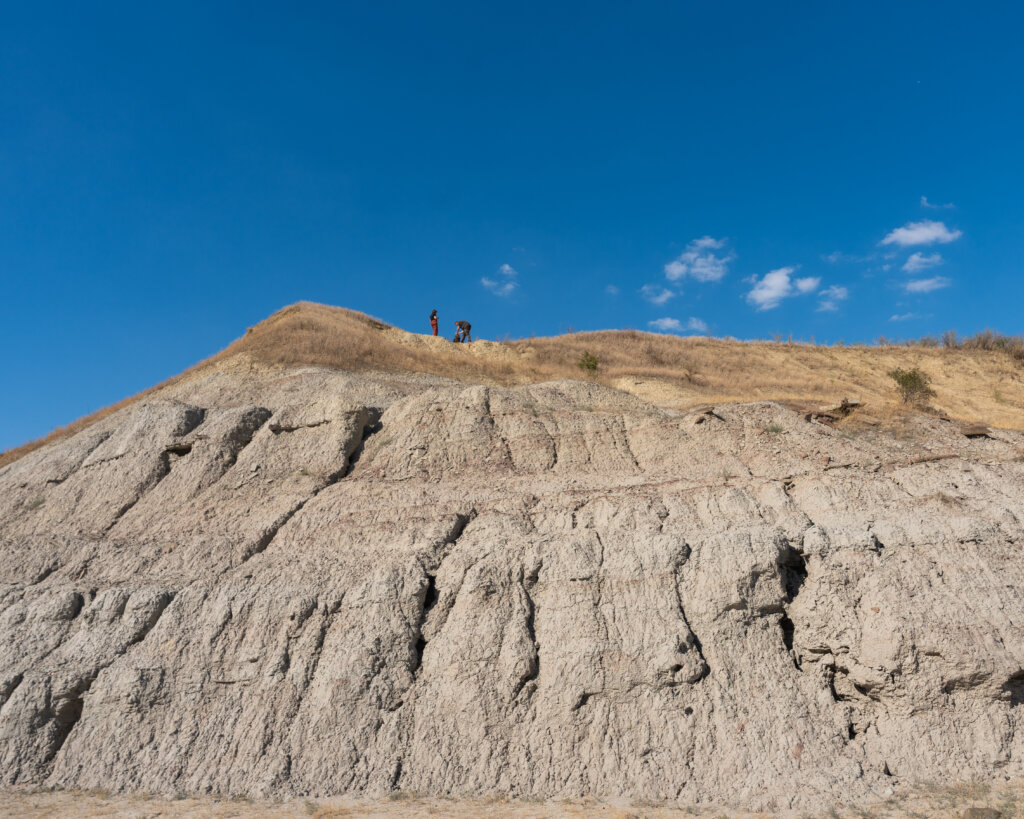
Another project, this time carried out mainly through the efforts of the Center itself – in the form of the physical labor of its staff – concerns climate change in Late Antiquity. This year we began with the first trial drillings, aimed at obtaining the largest possible cores and material for palynological studies.
These works, carried out in the heat and in well-dried loess, were by no means easy. Despite the hardships, however, we managed to collect a sufficient amount of material to conduct preliminary analyses. It did not come without consequences – we paid for it with sore muscles and blisters.
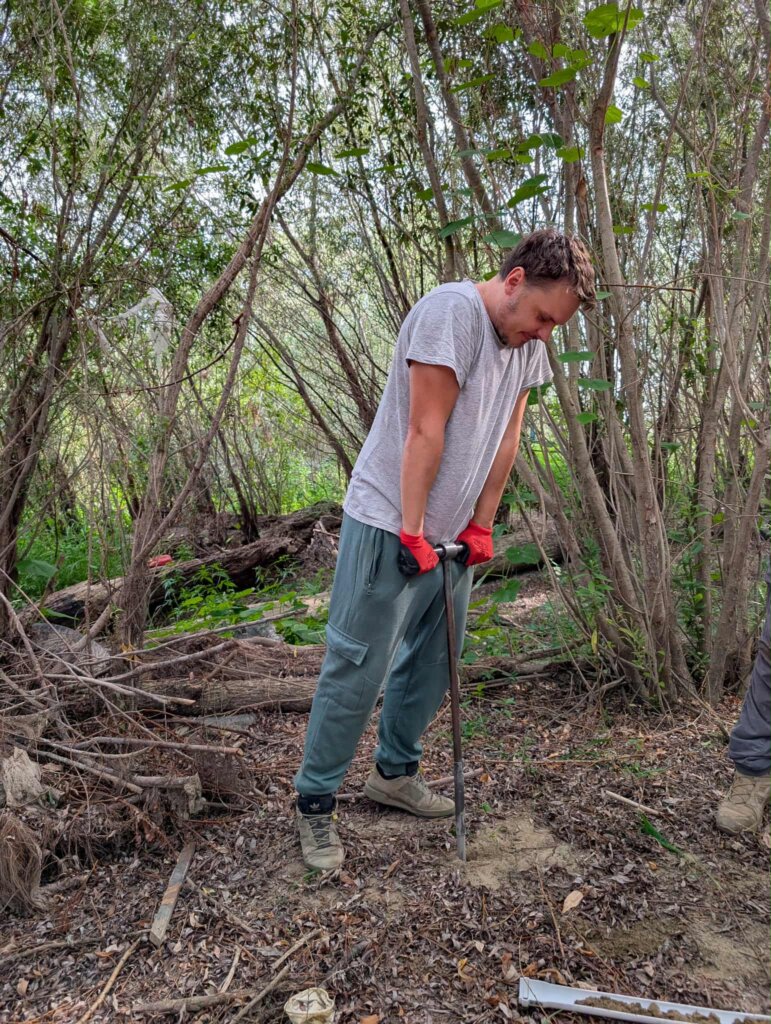
This year’s campaign yielded an impressive number of finds – 300 inventoried objects and dozens of kilograms of so-called mass material: fragments of pottery, glass, metal, bone, and more. Part of this assemblage will undergo specialist analyses. The numismatic material turned out to be particularly rich – over 150 coins from various periods will allow us to refine the chronological framework. The abundant late-period material also offers the opportunity to better understand settlement processes in Late Antique Novae. Especially noteworthy is the collection of iron artifacts, including a unique umbo, as well as a series of nails of different types, which will make it possible to establish a typology and indirectly provide information about the construction techniques in which they were used.

Novae, as always, did not disappoint us! In addition to the finds, there will also remain memories – captured in photographs of the team and our local workers, as well as in snapshots documenting various moments of this year’s excavations.

